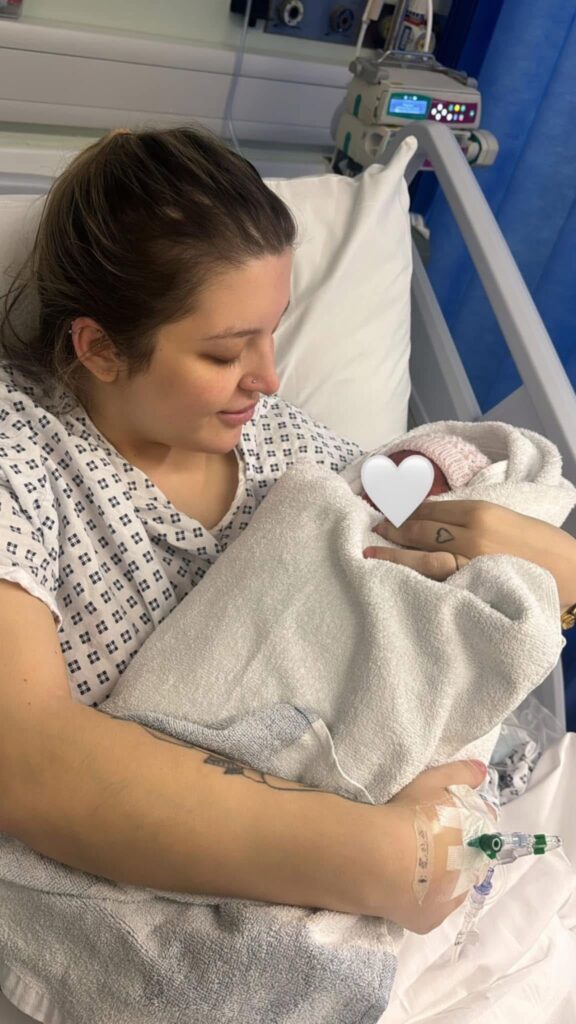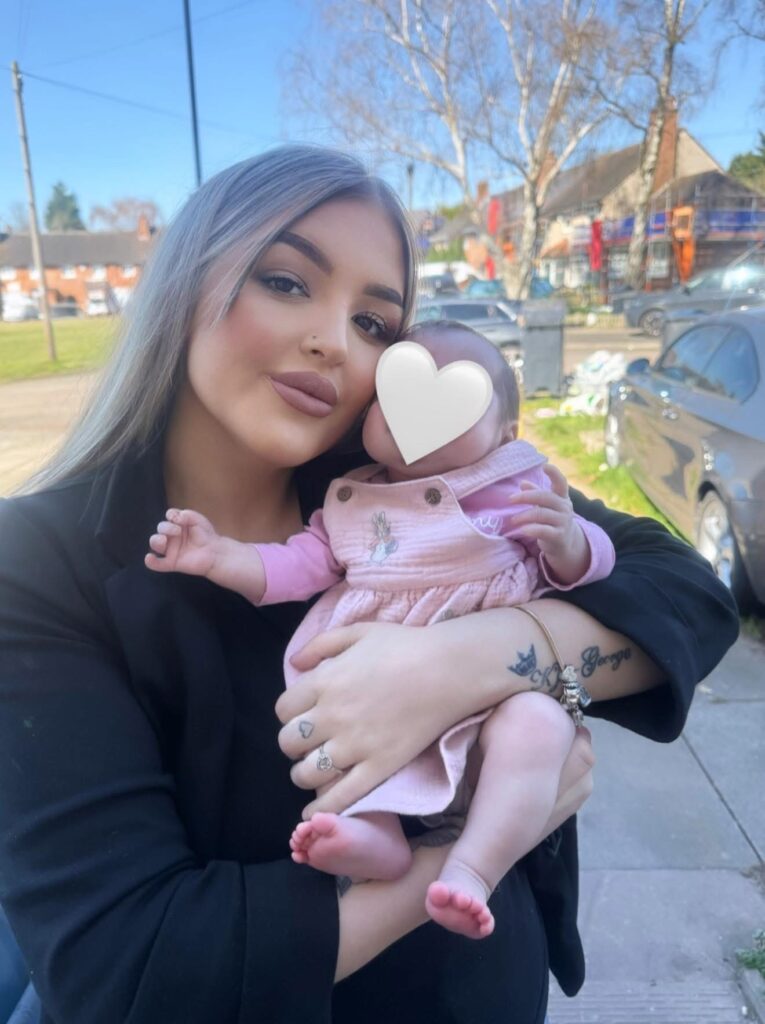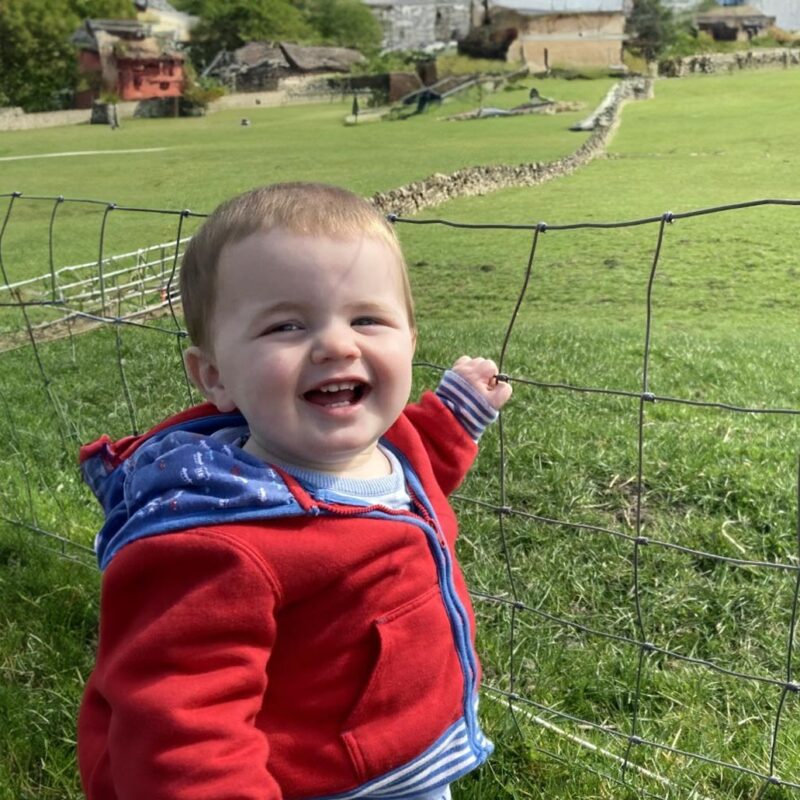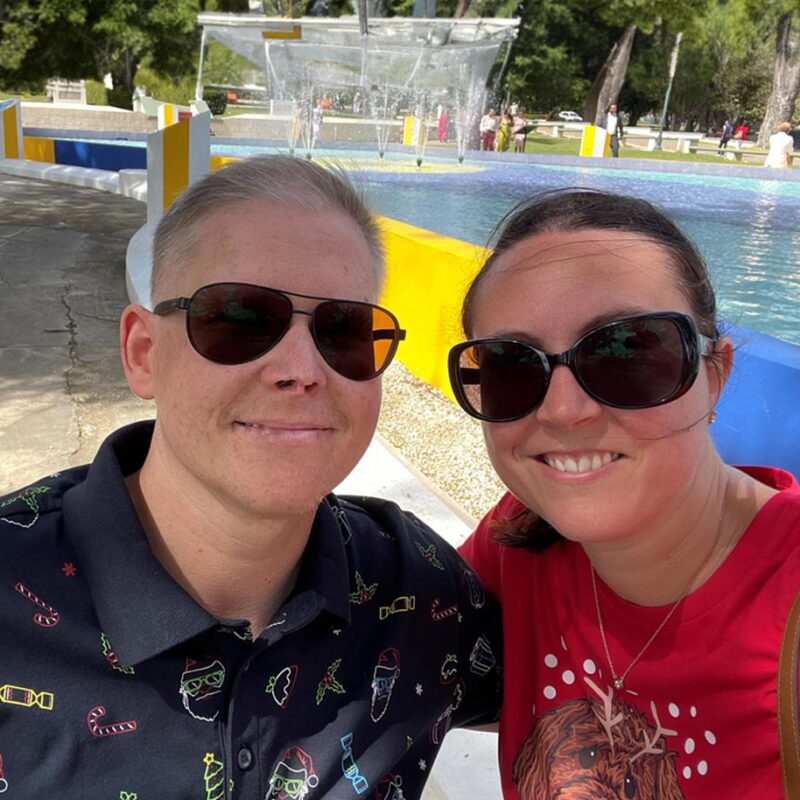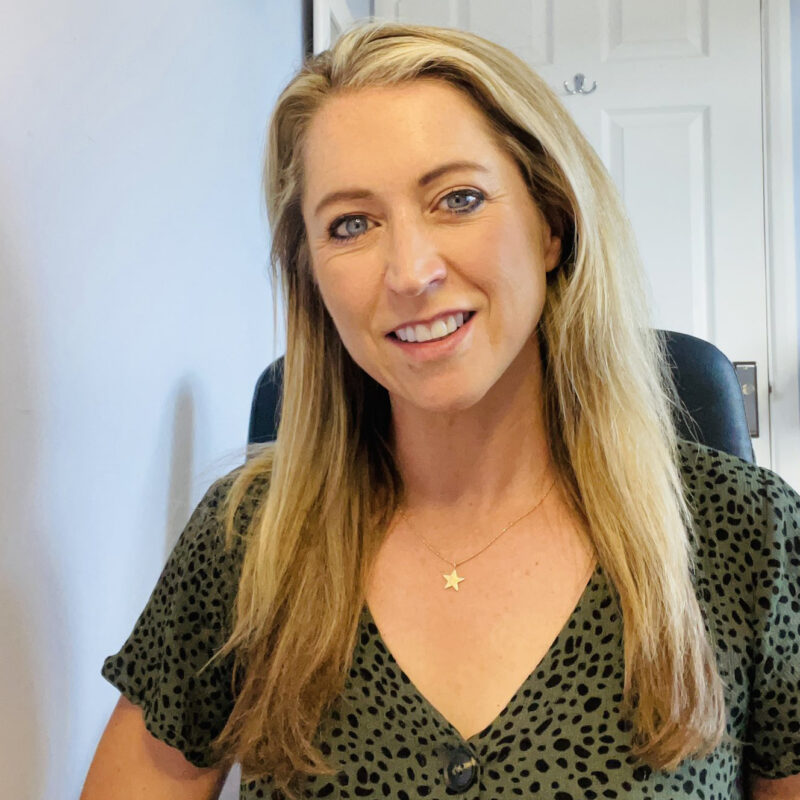When Megan Davies, 23, went into hospital at 34 weeks pregnant with severe pain and vaginal bleeding, she had no idea how quickly things would spiral into sepsis.
She is bravely sharing her story of maternal sepsis to help raise awareness amongst other mums, and is calling for more awareness among midwives…
On 18th January 2025, Megan Davies was rushed in for a category 1 emergency caesarean at Heartlands Hospital after a placental abruption, and gave birth to her second child.
The next day, while recovering on Maple Ward, Megan began to feel extremely tired, too tired to stay awake.
“I told the midwives something wasn’t right,” she said. “They said it was normal, I’d just had a baby – but I knew my body, and I knew this wasn’t normal.”
By 20th January, Megan’s condition had worsened. She was hot and sweaty, with a temperature of 38°C and a racing pulse of 120BPM.
“I was told I was just stressed, they didn’t think it was worth calling a doctor,” she said.
Later that same day, Megan began to shiver uncontrollably.
“I was shaking so violently that the whole bed was shaking with me,” she said.
When a midwife finally called a doctor, Megan’s temperature had soared to 40°C and her pulse had climbed as high as 160BPM.
“The doctor acted immediately. He asked the midwife to cannulate me and get paracetamol running through, but she didn’t come back for over half an hour. When I asked what was happening, she said: ‘It’s fine, we’ve got an hour.’”
Megan insisted on seeing the doctor again. When he returned, he was furious to see she still hadn’t received treatment, and called for additional support. Anaesthetist Samuel arrived and quickly got the IV paracetamol started. He also noticed something alarming.
“He asked me if it was normal to have bruises around my eyes,” Megan said. “I didn’t know what he meant until I looked in the camera on my phone – my face was purple, and my eyes looked sunken and bruised. I looked like I was dying.”
Megan was transferred to HDU, where the team worked quickly to stabilise her. She was too unwell to care for her baby, who was moved to the neonatal unit. After scans ruled out infection from her caesarean site, a CT of her chest revealed she had pneumonia in both lungs.
Because Megan is allergic to penicillin, her antibiotic options were limited – and the one that began to work meant she had to stop breastfeeding.
“The HDU staff were amazing – they saved my life,” Megan said. “But once I was well enough to return to the ward, things went downhill again. They missed a full dose of antibiotics because they forgot to order it. I felt completely let down.”
Although she eventually recovered physically, the emotional impact of sepsis is still with her.
“It’s caused issues with my thyroid and my liver, and I have terrible health anxiety. Every time I get an infection, I panic it’s going to turn to sepsis again. It ruined my whole birth and breastfeeding experience, and the first few days with my daughter,” said Megan.
Megan wants others to learn from what happened to her – particularly healthcare professionals.
“Midwives need more training to spot the signs of sepsis. I knew something was wrong, but I didn’t feel I had the right to argue. If I could go back, I’d tell myself: trust your instincts. Listen to your body. Not every professional will recognise sepsis straight away – but you know when something’s not right.”
Learn the signs, get #SepsisSavvy today

